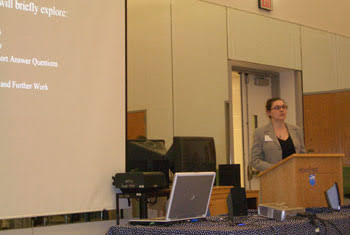From Coding to Coaching: The Shift that Powers Engineering Growth
The Untaught Transition
When I became an engineering manager, I expected the hardest part would be learning to coach adults who were experienced engineers. I was wrong. The hardest part was realizing that most of my peers had not been taught how to do this. Many didn’t think of coaching as part of their job.
The Common Path: Promotion Without Preparation
In tech, I’ve observed a common path to leadership: a senior engineer performs well and becomes a tech lead, taking on technical and soft-leadership responsibilities. If there’s no principal engineer or architect track, the next step in career development is typically engineering management.
But people management isn’t just a continuation of engineering skills. That would be like expecting a brilliant violinist to conduct an orchestra without ever learning about how different instruments work together, or how to guide musicians through complex emotional and technical passages. We would never, so why do it to engineers?
“In many cases, organizations lack clear training or support for new managers, which results in technical leaders who default to the skills that earned them promotion—usually not people management.”
Coding and Coaching: Two Distinct Skillsets
Software engineering work can be solitary, logic-driven, and quantifiable. Code runs on a developer’s machine, the pull request passes or fails the tests in the pipeline, and is either rejected or deployed. Then, the next development task can start. In contrast, coaching work is relational, emotionally attuned, and often ambiguous, based on the ever-changing nature of the human experience. It is work that’s never “done”. This makes coaching one of the more difficult leadership skills to pick up without preparation.
Teaching taught me that coaching is an intentional practice, not (fully) an instinctual one. At minimum, coaching requires listening with curiosity, giving specific feedback focused on somebody’s behavior (not their character), and knowing when to push someone, and when to step back to let someone learn on their own.
“Effective coaching must be intentional, structured, and rooted in curiosity—not command. It’s not a personality trait; it’s a practice that leaders can and must develop.”
What Happens When Coaching Is Missing
Maybe engineering organizations don’t see the need to teach coaching skills to managers. After all, these skills don’t always map directly to solving business problems. But ignoring them has real costs—costs that do impact the business:
- Micromanagement masked as mentorship
When managers micromanage, it creates a sense of distrust. I once worked with another engineering manager who reviewed every pull request from their team of (mostly) senior engineers. They believed this was mentorship—sharing their expertise. Instead, it created a bottleneck where those engineers stopped taking technical risks and began second-guessing their decisions. - Team members staying stuck because no one’s helping them grow
Engineers can experience stagnation when they don’t receive meaningful growth opportunities tailored to both their goals and the business’s. Without performance feedback, they can’t see how their decisions impact business outcomes, and they can’t make positive, incremental changes to improve. - Glue work going unseen and unrewarded
Especially for women, neurodivergent folks, and underrepresented engineers, glue work (code-adjacent tasks like documentation, mentoring, or cross-team coordination) often goes unrecognized. Managers can use coaching strategies to ensure that glue work is shared, visible, and valued. - Burnout in high-potential engineers who don’t feel supported
Strong, motivated engineers want to know how they can improve their performance, and are typically very committed to business success. Without coaching and growth opportunities, they may burn out or leave for companies that promise more support.
I’ve seen all of the above management-related problems at companies where I’ve worked—large SaaS orgs and lean startups alike. I made some of these mistakes myself when I first became a manager, and that was with preparation and experience in people growth. No company of any size is immune to the productivity and morale issues caused by ineffective management.
“When engineering managers neglect coaching and career development, teams experience disengagement and talent attrition—even among top performers.”
How I Practice Coaching In Engineering Management
As a teacher, I was trained to evaluate performance holistically and adapt strategies based on how each individual learned best. As a self-taught software test engineer, I learned to anticipate risk, observe behavior, and communicate clearly. Both skill sets translated directly into the coaching I’ve done over the past eight years as an engineering leader. I have refined many of these skills and learned some valuable lessons over time. Here’s how I’ve translated my teaching background into practical engineering leadership:
- Using 1:1s to focus on performance and professional goals
Face-to-face time is precious. I typically use group chat (slack, etc) to give group updates and retrieve work status information, while using 1:1s to discuss personal goals, performance concerns, and give tailored feedback. 1:1s are a lot like music lessons in this way. - Adapting feedback models from education, like SBI (Situation–Behavior–Impact)
SBI is my go-to model for actionable, respectful feedback. I use it for coaching both team members and leadership (managing up), and it’s been consistently effective because it removes the guesswork and defensiveness that often derail feedback conversations. Instead of saying “you’re not communicating well,” I might say: “In yesterday’s standup (situation), when you said the feature was ‘almost done’ (behavior), the product manager scheduled the demo assuming we’d ship tomorrow, creating last-minute pressure for the whole team (impact). Can you tell me more about what happened here?” The SBI approach keeps everyone focused on solutions rather than taking things personally. - Creating micro-goals and reflection practices
Small, meaningful goals keep people motivated. It’s a bit like practicing scales. They seem kind of meaningless in the day-to-day, but achieving wins there magnifies what I’m able to do in the future. I pair micro-goals with short (verbal or written) opportunities for reflection so individuals can track their own growth and see the connection between their daily work and larger achievements. The key to making this work is that I am not giving a grade or a rating. My team member measures their progress against the rubric, and gives their own assessment, which drives discussion and growth. - Coaching high-performers to become multipliers
One of the most important questions I get from senior engineers is: “How can I grow when I’m already at the top of the ladder?” My answer: learn to multiply. High-performers can drive impact by coaching others and raising the overall skill level of the team. This is a lot like the job of the concertmaster or first chair in my orchestras – she assists the entire section with how to play better, lifting up the sound of the entire section and orchestra.
Coaching Is Core
Coaching isn’t a soft skill—it’s a core leadership capability that transforms not just individual performance, but entire team dynamics. When engineering leaders learn to coach with the same intentionality they bring to designing systems, they create multiplier effects that ripple throughout the organization.
And just like writing great code or designing scalable systems, coaching can be learned and practiced. The question isn’t whether you have time to develop these skills—it’s whether you can afford not to.





